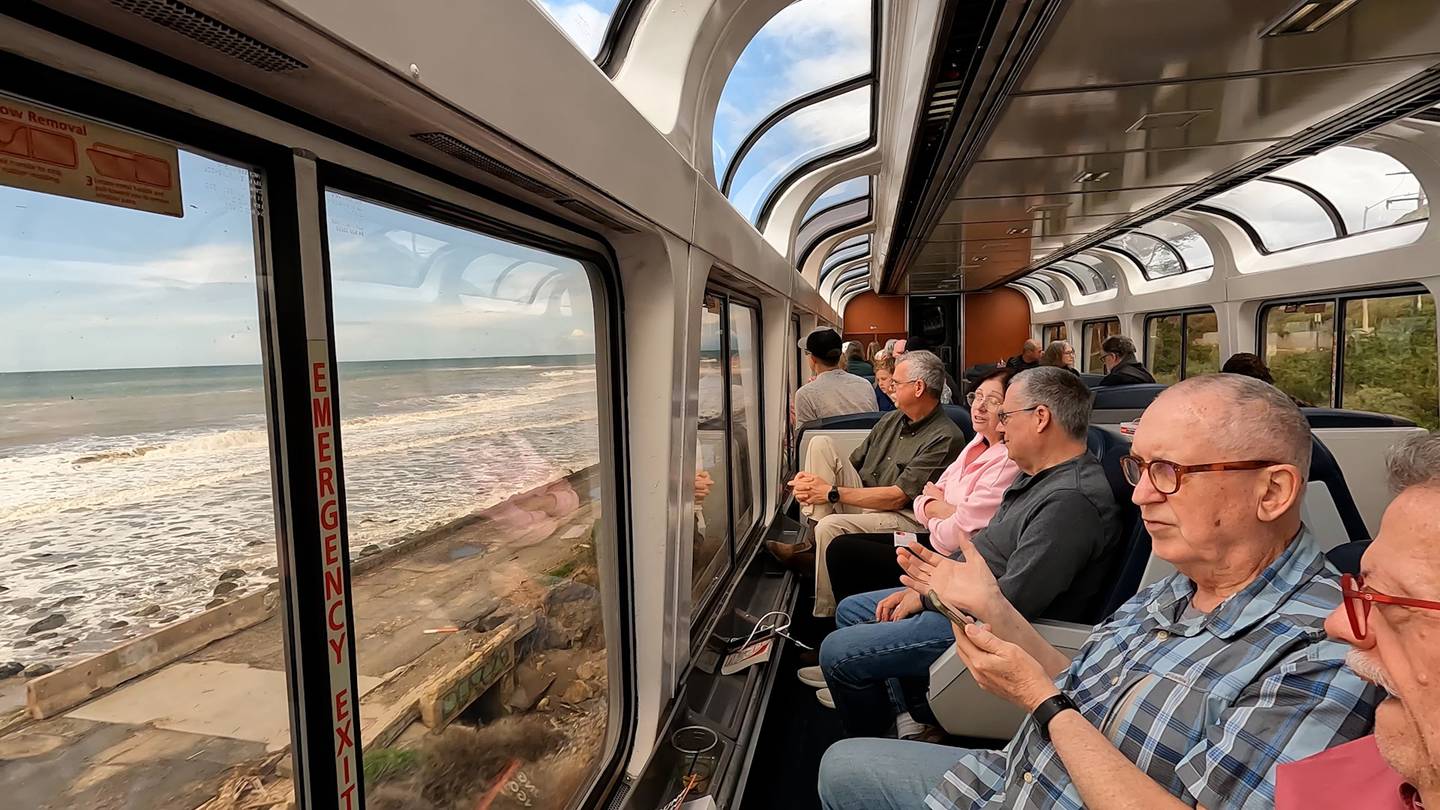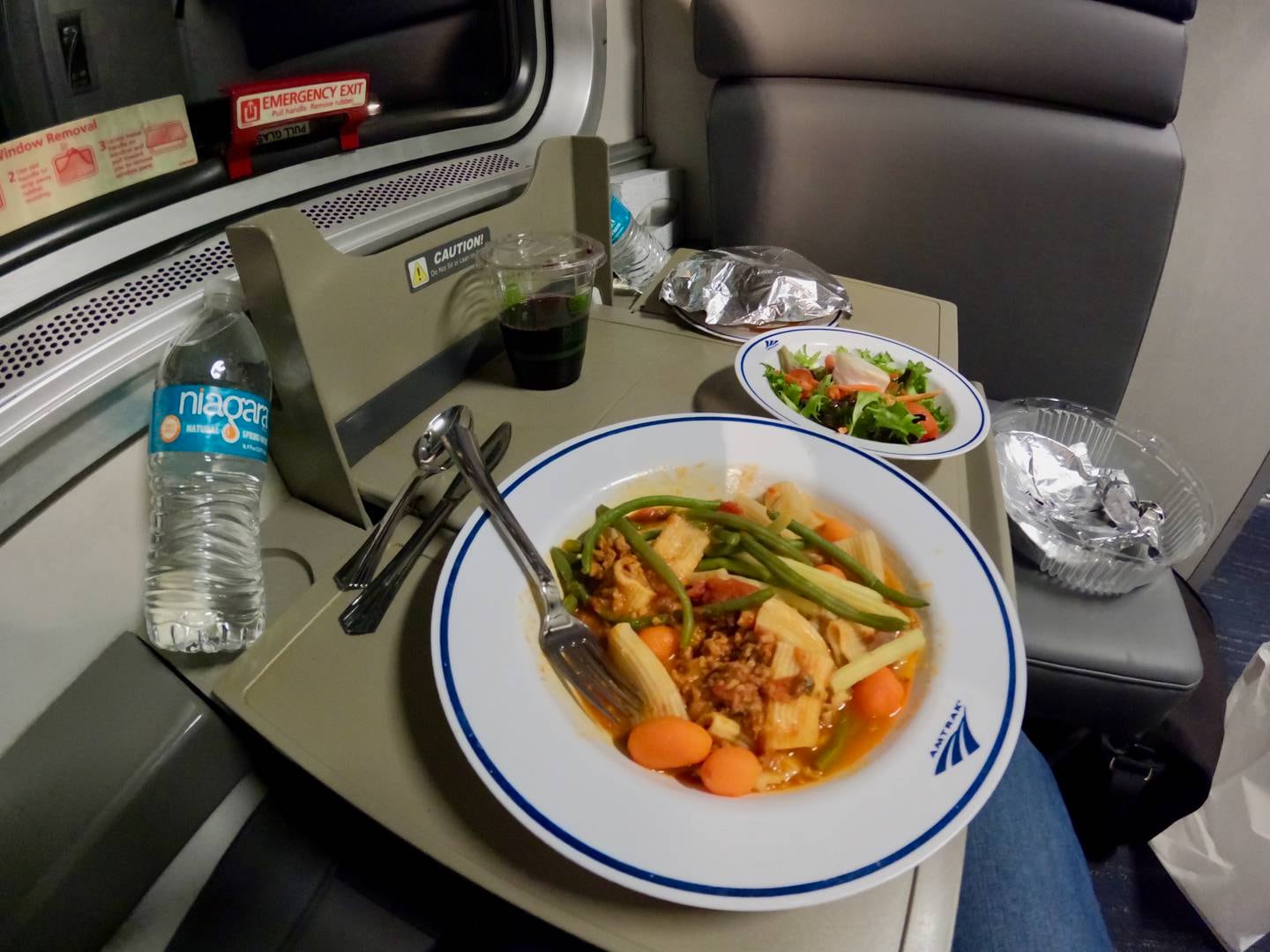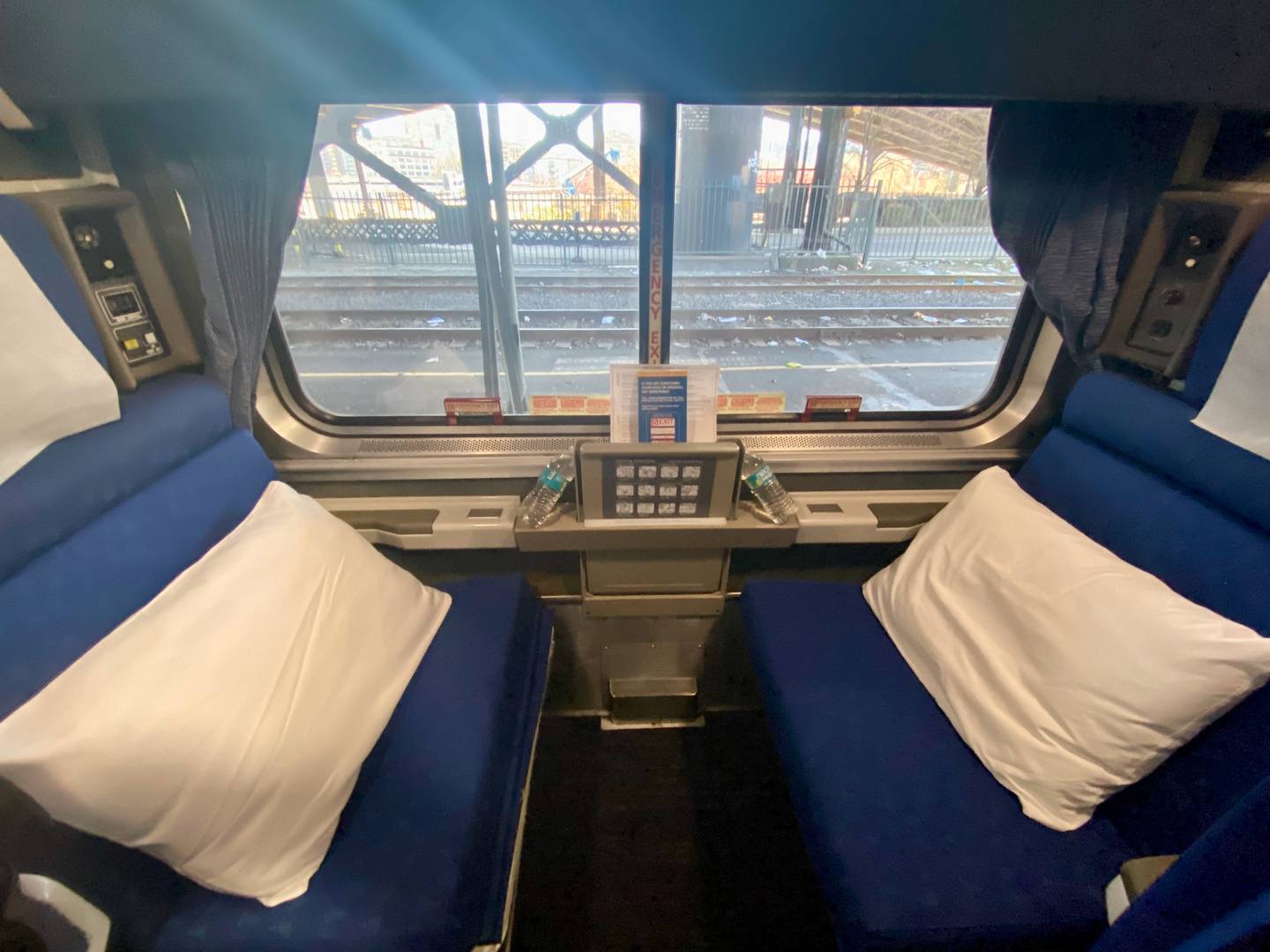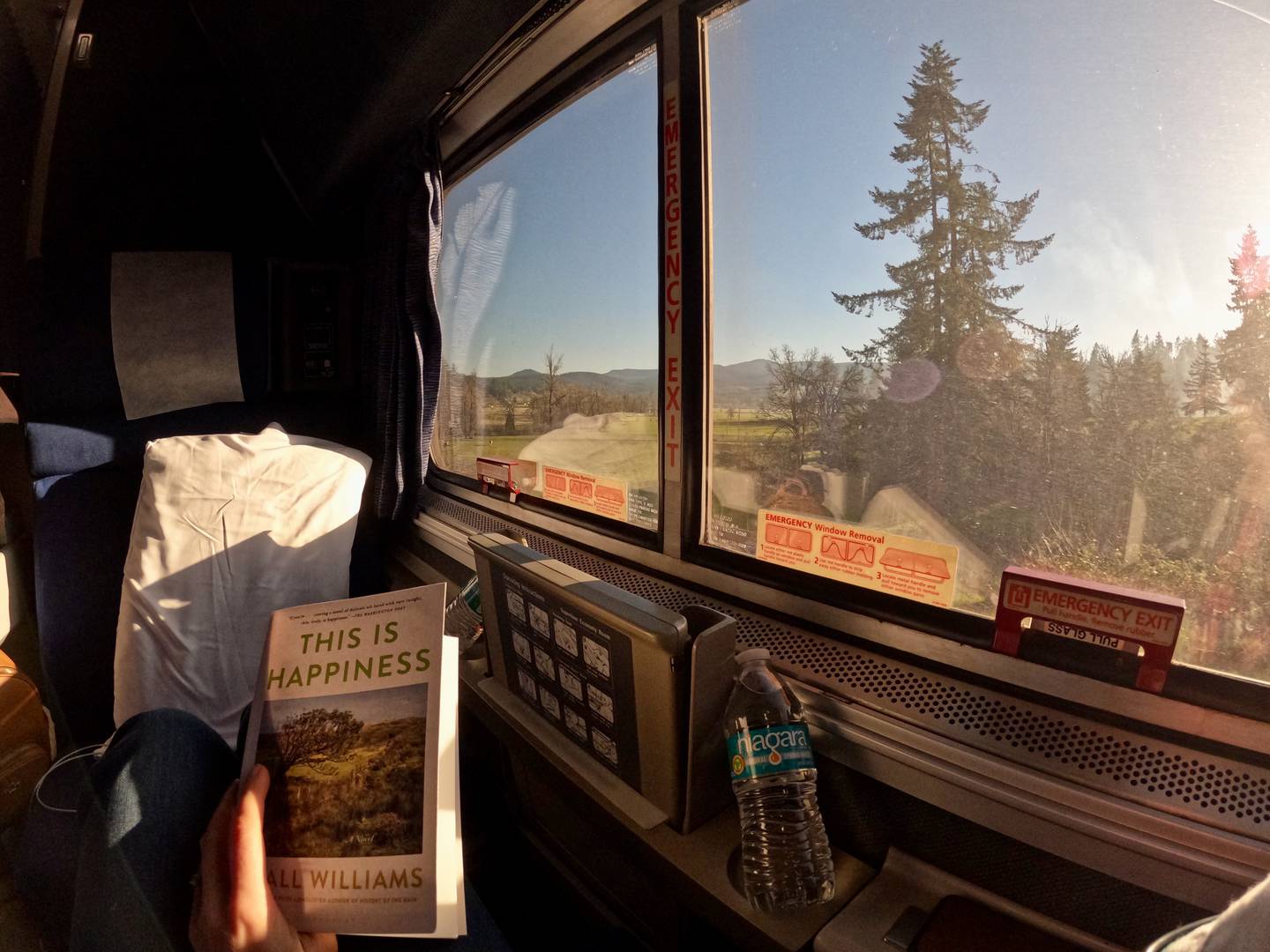A fearful flier’s guide to train travel on the Coast Starlight
8 min readIf you already had a fear of flying, this isn’t your year to travel.
First there was the pilot charged with attempting to crash a plane that was diverted to Portland International Airport. Then, of course, a door plug fell off a plane somewhere over Washington County. Since then, a number of news articles have convinced me that my flying phobia isn’t so off the mark after all.
So, last month, I spent six days roundtrip traveling via Amtrak from Portland, down to Los Angeles via the scenic Coast Starlight, and east to Houston, Texas, aboard the Texas Eagle and Sunset Limited.
For all but one of the nights on the trains, I traveled first class in a sleeper car, where travelers get a private room with meals included.
My train trip cost a total of about $3,000. A roundtrip flight would have been somewhere in the range of $500.
Was it worth it? To someone with a crippling anxiety around flying, absolutely. Here’s what you can expect on a cross-country Amtrak journey, along with a few tips I learned along the way.
Boarding
The biggest difference between air and rail travel is the first: the boarding experience.
As a “arrive at the airport two hours before your flight” person, I had no need to stress at the train station. Arriving 15 minutes before departure is plenty of time.
You just walk up to the train when it’s time to board and have your ticket scanned. No security check, no shoes being removed, no one looking at my luggage. I never even showed an ID. (Lest you get any ideas, a police dog did make the rounds in the Los Angeles Union Station lounge.)

The views
The Coast Starlight route has 30 stops along 1,377 miles from Seattle to Los Angeles, cutting across the Cascade Range in Oregon, through Klamath Falls and Sacramento, and eventually traveling along the Pacific Ocean in Southern California. From Portland to L.A., travel time is about 30 hours.
The Coast Starlight’s claim to fame is its lounge car, which is open to all train passengers. With massive, curved windows that reach into the ceiling, it’s the best way to see the landscape.
(And a bonus for those who feel claustrophobic on planes: every large window doubles as an emergency exit.)
The train passes golf courses and prisons, orchards and oil rigs, cities and tiny towns. It’s a great way to see the country in all its diversity.
There’s a shared awe and camaraderie in the lounge car, where everyone whips out their phones in unison and others beckoning you over for the best views. Those views happen on both sides of the train. If you see a steep incline outside your window, turn around. Odds are there’s a breathtaking cliff and vista on the other side.
In Oregon, you’ll pass Willamette Falls in Oregon City and the 5th Street Public Market in downtown Eugene. In the tiny town of Westfir, you can see the Office Covered Bridge, built in 1944 across the North Fork Middle Fork Willamette River, before climbing through the mountains.
There’s one section where you’ll want to plan ahead to snag a west-facing seat in the lounge car: The tracks between Santa Barbara and Ventura run right along the ocean.
Another thing about Amtrak: You can’t book a seat or a room on a specific side of the train. Because the cars are able to be pulled from either direction, the booking agent won’t be able to tell you whether you’ll be looking east or west on the day of your travel. If you don’t like your window view, check out the lounge car.

Meals
Meals in the dining car are included when you book in the sleeper car, but you can purchase them from coach. It’s $20 for breakfast, $25 for lunch and $45 for dinner.
Each dining car booth seats four, and if there aren’t four in your party, there will be at dinner. This was my favorite part of the trip — dining with different strangers for every meal. But if that’s not for you, sleeper car travelers can also get their meals delivered to their rooms. I also heard an attendant offer to deliver meals to people in their coach seats.
Compared with airline food, train food is haute cuisine. It comes on a real plate for starters. I had fresh salads, vegetarian pasta dishes, a burger, and a fabulous blueberry cheesecake.
The trains also had cafe cars, where anyone can purchase snacks, hot meals and drinks, including alcohol. Cash and cards accepted.

First class vs. coach
If you have the resources, an upgrade to a sleeper car for multi-day trips is worth every penny. I had a roomlette for much of the trip, which was just enough for a single rider but might be a tight squeeze for two, particularly if either traveler has mobility issues. The two facing seats recline to form a narrow cot; a second cot folds down from an upper bunk. Your car attendant will provide turn-down service and set up your mattress, blankets and pillows.
I spent two days in the family room of the Texas Eagle, which is designed to sleep four but is downright luxurious for one. The room spanned the entire train width and had two windows. Neither space had its own toilet or shower, but the shared facilities in the sleeper car are just fine.
I never had the opportunity to stay in a bedroom, but that comes with two beds, one window, a sink, and a tiny shower/toilet combo bathroom.
I wouldn’t recommend an overnight coach trip. While you can get up, walk around, sit at a cafe table or get some air in the lounge car, you’re ultimately going to spend an entire night trying to sleep next to a stranger.
If you plan to travel via sleeper car, book your tickets far in advance. I had difficulty finding a room for the duration of the Coast Starlight.
The Amtrak website will only allow you to book either coach or first class for the duration of your time on a train, but you might find that a room is available for a shorter segment. I was unable to book a roomlette from Los Angeles to Portland, but later learned there had been a room available from Sacramento to Portland. If you can’t find what you’re looking for online, speak to an Amtrak agent by calling 1-800-USA-RAIL.
Train culture
Plane travel is a means to an end. I find it hard to believe that anyone enjoys flying. They do it because they want to be someplace else, and that someplace is not the cabin of a Boeing 747.
Most first-class train travelers, however, are here for the journey. I met lots of retirees who had the time (and financial resources) to slow-travel the country. Some had been on the rails for weeks at a time, stopping at various cities. One fellow passenger, Linda Groover of California, told me the train was the most romantic way to travel.
“I worked for American Airlines for many years,” she said, “and I was exposed to just about every kind of flight you can imagine, including a flight around the world. But when you take a train, you see the land, you see the countryside, you meet the local people, and it’s just far more adventurous. It’s also relaxing.”
Most everyone is happy to chat – under the right circumstances. I had wonderful, engaging conversations with all my dining companions. But those conversations were only obligated to last a half-hour. I was reluctant to even make eye contact with the woman who was my seatmate in coach for 24 hours. No one wants to open that Pandora’s box.

What to bring
Amtrak’s website advertises “free wifi on trains!” but you need to look at the fine print to find out which trains, and those trains do not include the Coast Starlight, Texas Eagle or Sunset Limited.
Not only will you not have wifi, you often won’t have cell service.
Once you accept this, it’s actually quite freeing.
Bring a few books.
Other things to bring:
– An extension cord with multiple outlets. This is helpful in both the rooms (which come with a single outlet) and in coach, where an outlet might be on the other side of your seatmate.
– Small bills to tip the staff, especially in the sleeper car. The car attendant will turn down your bed each evening and schedule reservations for you in the dining car. There are also servers for each meal.
– Flip-flops for the shower, just like those college-dorm days. You’ll only have access to a shower in the sleeper cars, but even coach has a toilet/changing room where you’ll have space to change clothes.
– In coach, bring your own blanket and pillow. These are only provided in the sleeper cars. Wear comfortable shoes or bring slippers to put over your socks in coach. Don’t be the guy who goes shoeless. Ugh.
– Amtrak allows passengers two 50-pound carry-on bags, up to 28-by-22-by-14-inches each, plus a personal item like a briefcase or backpack, for no extra fee. If you’re taking a multi-night train ride, pack the things you’ll need in your personal bag, and either check your big luggage or stow it in the luggage racks. I learned the hard way that a large suitcase won’t fit in a roomette. An Amtrak employee recommended I check my luggage through to Portland while I was in coach so I didn’t have to worry about anyone grabbing my bag from the luggage rack during a random stop.
Takeaways
There’s so much to see along an Amtrak journey. You can stretch your legs either between cars or during several short stops along the way.
“Slow travel” costs more and takes longer, but if you can’t handle the stress of flying, it’s a great alternative.
— Samantha Swindler covers features for The Oregonian/OregonLive and Here is Oregon. Reach her at sswindler@oregonian.com.
Our journalism needs your support. Subscribe today to OregonLive.com.

